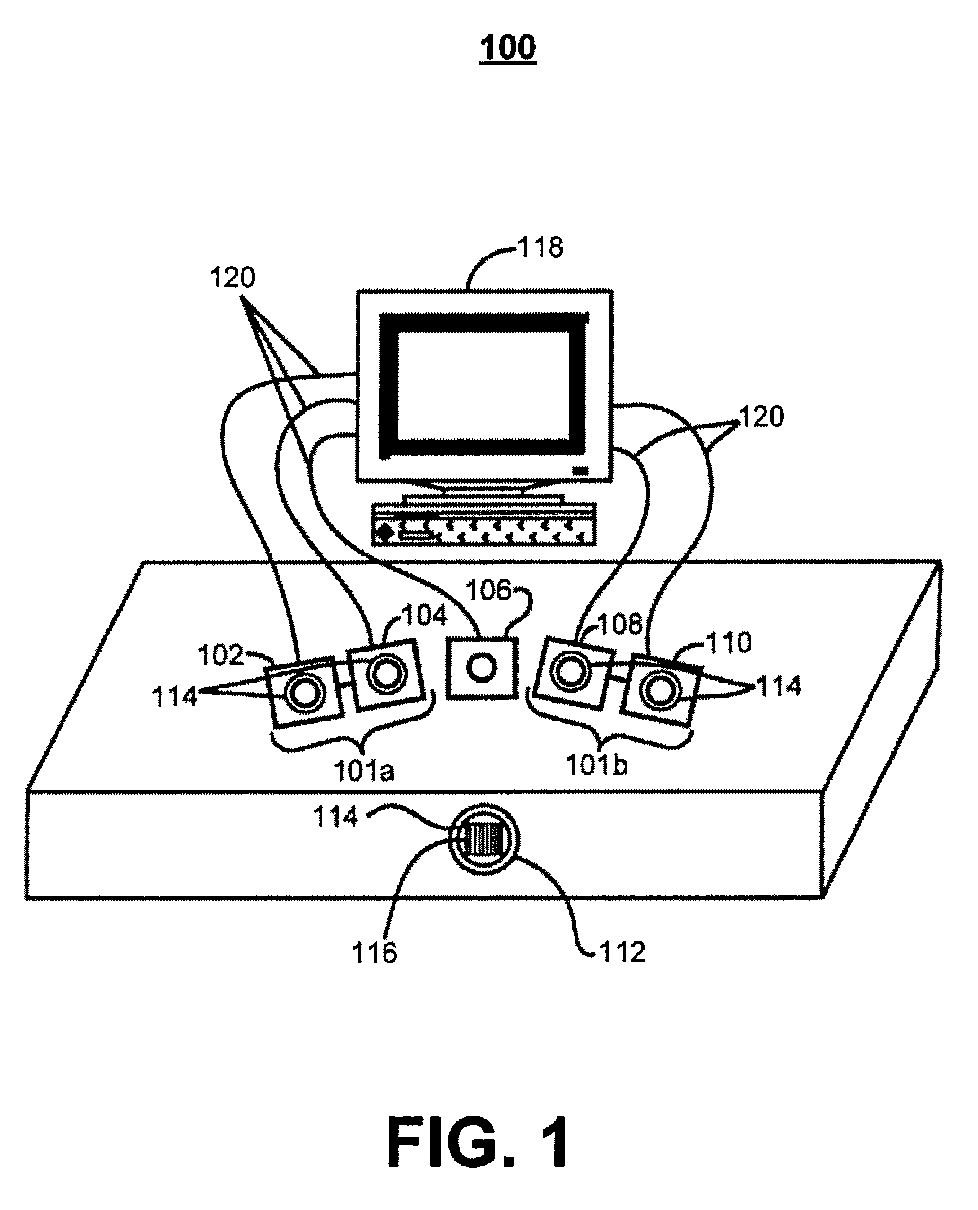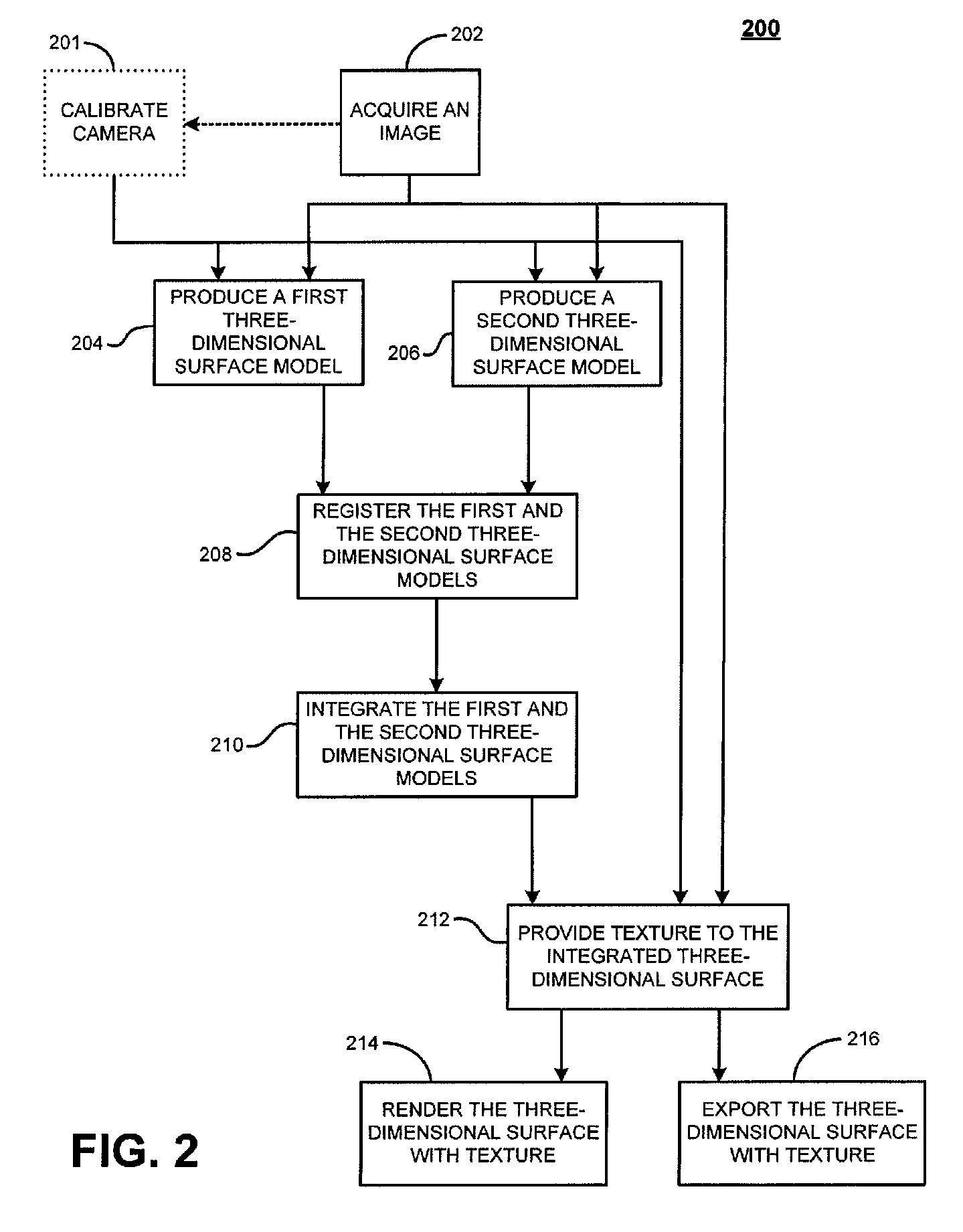Enhanced object reconstruction
a reconstruction and object technology, applied in the field of image processing, can solve the problems of inability to effectively deal with the noise of sensors, the second method is typically computationally more expensive, and the sensor within the category is usually limited to sensing, so as to facilitate portability and use, and facilitate the efficient and accurate finding of the correspondence between the views.
- Summary
- Abstract
- Description
- Claims
- Application Information
AI Technical Summary
Benefits of technology
Problems solved by technology
Method used
Image
Examples
Embodiment Construction
[0049]Referring to FIG. 1, an implementation for a three-dimensional digitizing system 100 is shown, which includes five cameras 102, 104, 106, 108, and 110. The cameras are arranged as two stereo pairs 101a and 101b, with stereo pair 101a including cameras 102 and 104, stereo pair 101b including cameras108 and 110, and as one texture camera 106. System 100 also includes a pattern projector 112, five infrared filters 114 (one on each of stereo cameras 102, 104, 108, and 110 and one on pattern projector 112), and a slide 116 having a pattern. As an illustrative example, slide 116 is shown with a vertical-line pattern. Cameras 102, 104, 106, 108, and 110 are coupled to a computer processor 118 via wires 120.
[0050]The three-dimensional digitizing system 100 is able to capture three-dimensional information of a dynamic or a static scene. System 100 uses infrared lighting to illuminate an object and uses infrared filters 114. System 100 illuminates the object with a desired pattern using...
PUM
 Login to View More
Login to View More Abstract
Description
Claims
Application Information
 Login to View More
Login to View More - R&D
- Intellectual Property
- Life Sciences
- Materials
- Tech Scout
- Unparalleled Data Quality
- Higher Quality Content
- 60% Fewer Hallucinations
Browse by: Latest US Patents, China's latest patents, Technical Efficacy Thesaurus, Application Domain, Technology Topic, Popular Technical Reports.
© 2025 PatSnap. All rights reserved.Legal|Privacy policy|Modern Slavery Act Transparency Statement|Sitemap|About US| Contact US: help@patsnap.com



